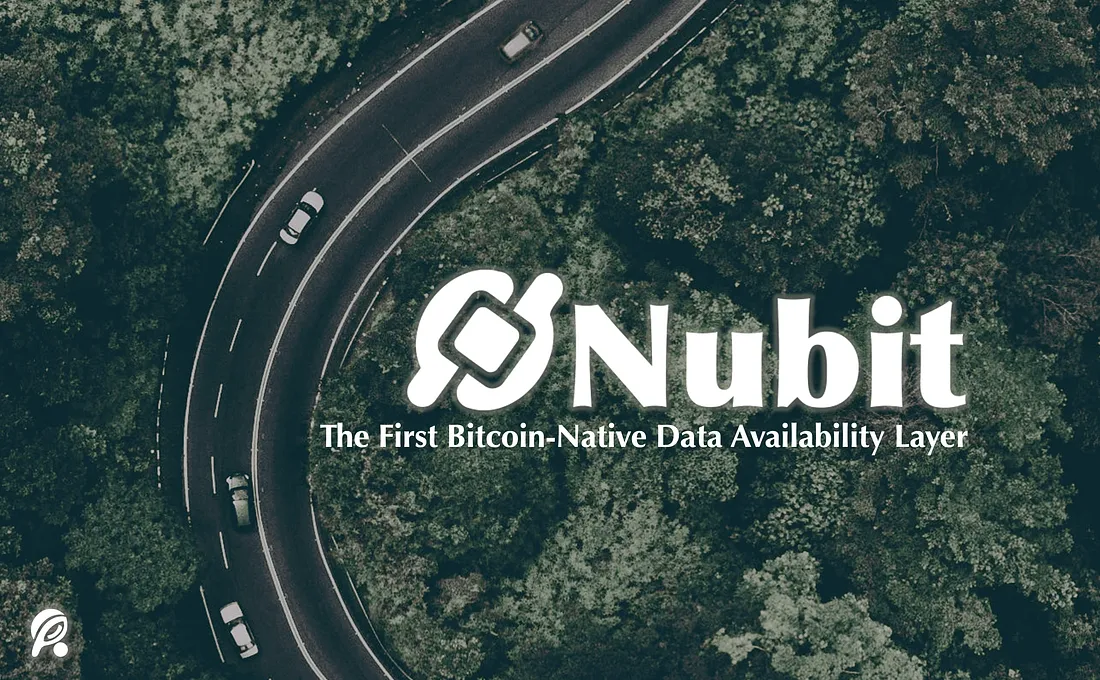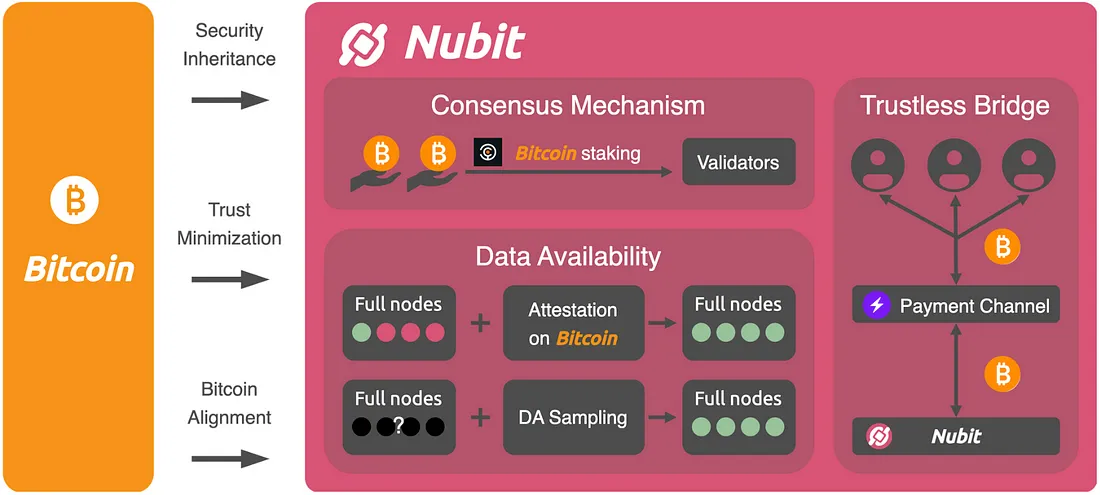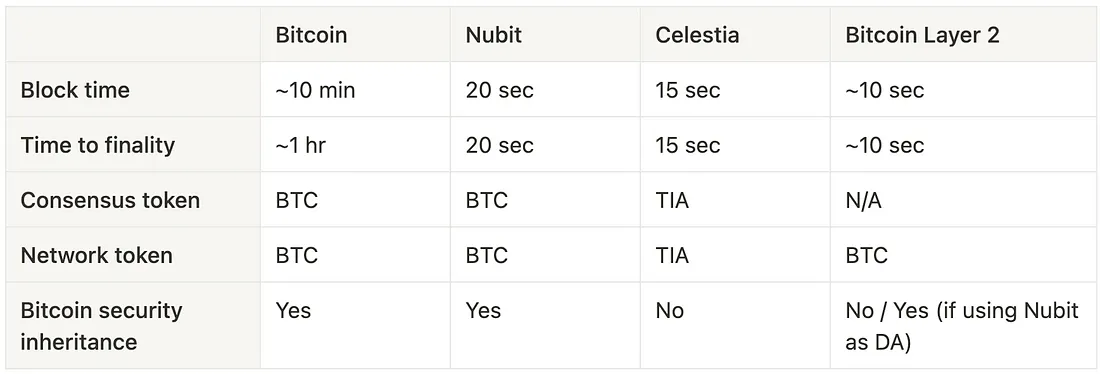
What is Nubit? What are they trying to solve?
Riema Labs has launched Nubit, the first Bitcoin-native data availability layer, to address the significantly high costs of data stored on the Bitcoin blockchain. Nubit is a scalable & cost-efficient data availability layer secured by Bitcoin, enabling the scaling of Bitcoin's data capacities without compromises. It empowers applications like Ordinals, Layer 2s, and price oracles, broadening the scope and efficiency of the Bitcoin ecosystem. Nubit's core elements powered by Bitcoin include:

Let’s dive into Nubit's unique role in the Bitcoin ecosystem, comparing its three elements with other solutions.

The current non-asynchronous BFT consensus algorithms are based on semi-synchronous network assumptions. BFT can function effectively with stable node connections, as networks are expected to deliver within a specific timeframe. In reality, no project can guarantee the infallibility of a single node.
Introducing NuBFT, a consensus algorithm deeply optimized for Data Availability (DA). NuBFT uses Reed-Solomon Coding (RS-coding) to restore original data even in compromised nodes and KZG commitments to ensure data validity in Bitcoin. The consensus process directly influences the integrity, availability, and scalability of stored data, thereby enhancing the overall robustness of the DA system.
Nubit also uses Bitcoin for consensus protocols, leveraging its economic security through native staking mechanisms like Babylon. In contrast, generic DA layers like Celestia use their network tokens, introducing additional trust assumptions outside of Bitcoin.
Nubit's consensus layer redesign aims to reduce data storage costs by 10-30 times, increase data availability, and lower participation thresholds, making shared security with Bitcoin feasible.
Data Availability

Nubit uses a hybrid approach, combining full and light nodes, to prevent network disruptions caused by incorrect data encoding of nodes.
Firstly, Nubit uses KZG commitments as validity proof to ensure DA, reducing memory, bandwidth, and storage requirements while maintaining succinctness.
Nubit network's robustness ensures data restoration even in collapse, using full nodes and Bitcoin-submitted KZG commitments, achieving a 1-of-N trust assumption, unlike generic DA layers like Celestia.
Nubit's network scalability is enhanced by using light nodes with Data Availability Sampling (DAS), allowing block sizes to be scaled without affecting applications. This data verification method adds efficiency and scalability to the network.
Lastly, Nubit's design does not possess a smart contract execution layer, unlike Bitcoin Layer 2 solutions, which handle complex state transitions in smart contract executions.
Trustless Bridge

Blockchain bridges facilitate asset and data transfers. Celestia and Ethereum Layer 2s use advanced methods like Cosmos IBC protocol and smart contracts for decentralized bridging. However, Bitcoin's unique design lacks smart contract capabilities and off-chain state syncing, causing potential security vulnerabilities in Bitcoin's architectural constraints.
Nubit uses Bitcoin's Lightning Network for secure, trustless bridges within the Bitcoin ecosystem. Users handle transaction fees directly within state channels, ensuring funds' security is directly tied to Bitcoin's security, unlike other bridge solutions.
Furthermore, Nubit's design allows emergency withdrawals, ensuring user trust and security by eliminating reliance on third-party entities and adhering to trust minimization principles.
In Short
Nubit is a Bitcoin-native blockchain solution, distinct from Celestia and traditional Layer 2 technologies. Its strength lies in its consensus mechanism, validity proof, and trustless bridge, ensuring secure and seamless integration within the Bitcoin ecosystem.